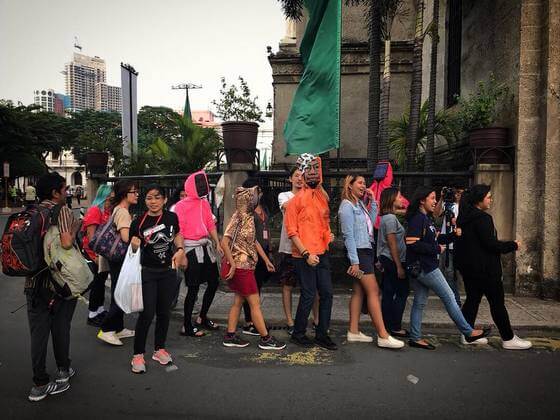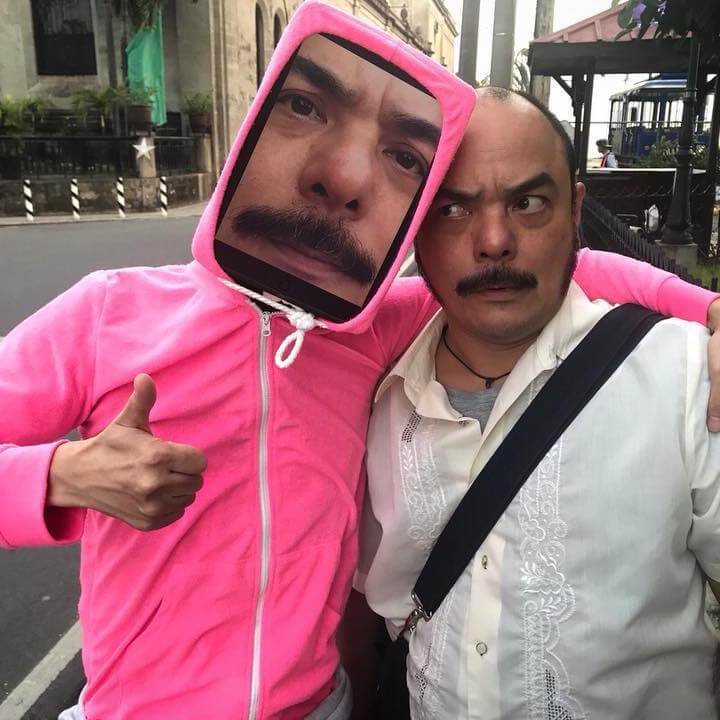WSK: The Festival of the Recently Possible, together with The Japan Foundation Asia Center and De La Salle-College of Saint Benilde School of Design and Arts, shed light on the growing importance of new media arts in the era of rapid innovation and technological evolution at WSK Axis 2017 festival, which ran from Oct 23 to Nov 4, 2017.
A platform to understand and showcase emerging art forms, the festival featured exhibits, fora, workshops and performances that offer critical perspectives on how emerging technology and digital discoveries are transforming human nature and the environment.
The exhibit “INTERSTICES: Manifolds of the In-Between” focused on artworks that marry traditionally divorced disciplines—science, arts, music, and technology. A mix of Japanese and Filipino artists—Ryoichi Kurokawa, HouxoQue, Tsuyoshi Hisakado, Pauline Vicencio-Despiand Ivan Despi, Tad Ermitaño, Ian Carlo Jaucian, and Derek Tumala, the artists assembled by curator Tengal Drilon is a multidisciplinary group who can not only paint, but also code and solder.
Dubbed as WSK Feedback Forum, the fora mapped out various histories of new media arts with a focus on sound practices in the Philippines and Asia across different generations and locations. Key people in the local sound art scene Tad Ermitano, Lena Cobangbang, TengalDrilon, and Erick Calilanshared their learnings from their experiences and opened the floor for dialogue about issues and possible initiatives that could help the scene grow even more.
Co-convened and organized by Filipino sound media artists and curators Dayang Yraola and Merv Espina,the fora also featured the collective’s immediate network in Asia: Aesthetics professor and Oggaki Biennale 2006 curator Hiroshi Yoshioka, independent sound archivist David Tariganof Irama Nusantara, Jakarta,, Joe Kidd of The Ricecooker Archives, Kuala Lumpur, Alice Wong ofThe Library, Soundpocket, Hong Kong, Mark Wong of Ujikaji Records, Singapore, Indra Menus of Jogja Noise Bombing, Jogjakarta, and renowned sound culture scholar Nakagawa Katsushi, Yokohama.
The workshops were geared towards developing people’s eye for new media arts that go beyond the surface to deepen perspective and appreciation of its relevance to culture, arts and education. With workshops like Houxo Que’s “The Medium is the Mess Age” that explores the relationship of the body to new and old media in the Internet age, to Heresy’s lecture-demo series featuring female creatives dabbling with new media (Teresa Barrozo’s “Sound AFX”, Gladys Regalado’s “Arduino for Artists and Designers” and JoeeMejias’ “Projection Design”), to the how-to workshops on DIY analog synthesizers by Mark Rambo, Laredo Hackerspace, and Andreas Siagian, WSK was able to deepen the audience’s understanding and appreciation of contemporary new media arts.
Primarily curated by Erick Calilan and Itos Ledesma, the festival’s performances served as a creative platform for independent practitioners to share their practice as well as foster and re-establish connections among a variety of different independent sound and media artists and collectives in the Philippines and across Asia.
Japan Foundation Asia Center, together with Jorge Wieneke, celebrated unity between the Japanese and Filipino electronic music scenes at “x-pol,” a collaborative concert between Buwan Buwan collective and Maltine Records.
In anticipation of Manila Biennale: Open City, Carlos P. Celdran with Japanese artist Katsuki Nogami gave a free Intramuros tour featuring one of the festival’s performance installation, the “Yamada Taro” project. Filipinos who were part of the tour were excited and fascinated by the quirky “selfie” project.
A project by Japanese artist Katsuki Nogami, “Yamada Taro” explores ideas of identity and the anonymity in technology. “Yamada Taro” is a placeholder Japanese name, like “Juan Dela Cruz” in the Philippines. To create “placeholder people,” Nogami attached iPads to people’s faces. The performers, whom he calls “friends,” took photos of strangers they encounter. Each photo appeared on the iPad screens, “transferring” one’s identity to the performers.
WSK is on its way to building a physical space where the group will focus on archiving new media art from the past, especially sound practices.
“We’re planning to create an open library and archive housed in a physical location to encourage communities to engage each other especially the art and sci-tech communities,” founder Tengal Drilon revealed.
WSK is slated to put up a radio lab at Manila Biennale: Open City and is participating in Media Art Culture in Asia (MeCA) in Tokyo this coming February 2018.
All details and documentation of WSK Axis Festival are up in WSK’s social media pages and website.
For more information, please visit our website (www.wsk.io)
MAIN FB event page: https://bit.ly/WSKAxis2017Festival
Registration link: https://bit.ly/WSKAxis2017ExhibitionsTicketRegistration
###
About the Japan Foundation
The Japan Foundation was established in 1972 by special legislation in the Japanese Diet and became an Independent Administrative Institution in October 2003. The mission of the Japan Foundation is to promote international cultural exchange and mutual understanding between Japan and other countries. As the18th overseas office, the Japan Foundation, Manila was founded in 1996, active in three focused areas: Arts and Culture; Japanese Studies and Intellectual Exchange; Japanese-Language Education Overseas. For more information please visit our website at www.jfmo.org.
The Japan Foundation Asia Center, established within the Japan Foundation in April 2014, is a specialized unit with the goal to connect people, expand networks, and develop cultural programs across Asia. As the Tokyo Olympics and Paralympics lie ahead in 2020, through projects in such diverse fields as music, theater, film, sports, Japanese language education and other academic exchanges, the Asia Center, in cooperation with the Foundation’s overseas offices, pursues and supports various forms of activities between Asian communities. Some of their events include Dance Dance Asia 2017 and The Asian-Three Fold Mirror 2016.
About The WSK: Festival of the Recently Possible
WSK—a modern disemvoweled form of “wasak,” which means “shattered” or “destroyed” in Filipino—is the first and only annual international art festival dedicated to contemporary electronic, digital, and experimental art.
Launched in 2009 as Fete dela WSK and rebranded as WSK in 2013, the festival explores the diverse range of cross-disciplinary artistic activities in the context of digital culture and performance, with focus in collaborative projects between the Philippines, South East Asia, and beyond. It aims to blur, deconstruct, and reimagine the preconceived notions of how art, culture, and technology diverge, merge,and work together.
It is organized by SABAW Media Art Kitchen –a not-for-profit artist-run initiative whose primary interests lie in curatorial and research-based production towards the imminent intersections of art and technology. The festival primarily runs on a Do-It-Yourself and Do-It-Together ethic and is mostly self-funded, with partial funding support from cultural organizations.
Website: www.wsk.io
About De La Salle-College of Saint Benilde, School of Design and Arts (SDA)
The School of Design and Arts (SDA) offers a wide scope of degree programs in specialized creative disciplines that meet the demands of today’s information-driven world.
The SDA Campus, a 14-storey academic complex, is one big playground for creative minds and a venue that stimulates students to think out of the box, shift perspectives, and innovate ideas.






